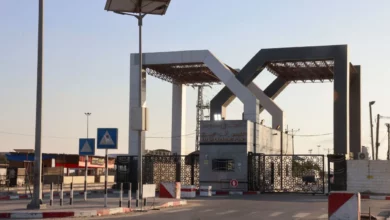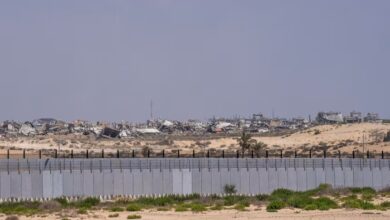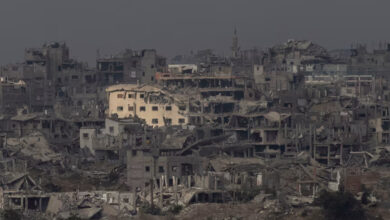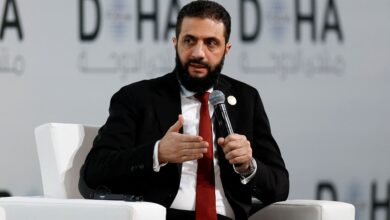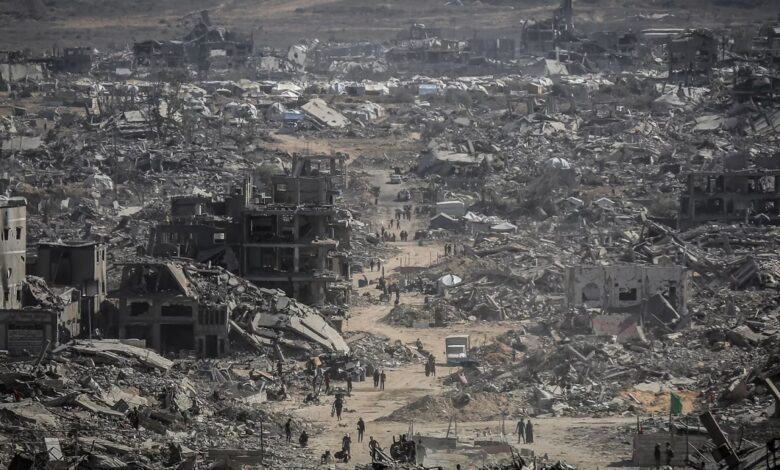
To find the place where he used to live, Noor Abed needed GPS.
As he pedaled north on his bicycle along the coastal highway from the town in central Gaza where he had taken refuge, not even the ruins of familiar buildings could guide him. What was once his neighborhood in Gaza City is now a row of sand dunes.
“There are no conditions for life here,” Abed, 35, told CNN. “No water, no electricity, no schools, and almost no phone coverage.”
The former software engineer is living in a tent he set up in the courtyard of Al-Azhar University, whose ruined campus has become a refugee center. Not all his family returned with him, worried that the nascent ceasefire may not hold.
“We are waiting to be sure the war has truly ended before bringing everyone back,” he said. The men in his family are preparing a place to live for others, as bulldozers begin clearing some of the roads. “Life is beginning to return,” he said. “Somewhat.”
Adding to the overall uncertainty in Gaza are complex questions about what security might look like in the future, as a mixture of what’s left of Hamas and rival clans, gangs and militias vie for power. For many Palestinians in Gaza, however, their most immediate needs – food, shelter, water – remain the most pressing.
Just over a week after US President Donald Trump strong-armed Israel and Hamas into an agreement that halted two years of devastating war, Palestinians in Gaza are beginning to put the pieces of their lives back together. But – even if the ceasefire holds – the scale of the task is Herculean. Almost every building is damaged or destroyed beyond repair. Nearly 68,000 people are dead, according to local health officials. Thousands are missing, their bodies presumed to be under the rubble. Gaza’s children, who number more than half of its estimated prewar population of 2.2 million, have gone without schooling for two years. Food is still hard to come by, and while the level of aid has increased since the ceasefire, there is not yet an established framework for its orderly distribution. And, as shown by the grim pictures of public executions this week, further breakdown in law and order hangs over everything.
To paint this picture of life in Gaza in the days after the ceasefire brokered by the Trump administration and Arab mediators, CNN spoke to residents in the enclave, consulted Palestinian and Israeli officials and analyzed social media footage. A review of reports by the United Nations and other agencies helped provide context around the scale of the destruction and the efforts and costs required to rebuild. Despite the ceasefire, Israel continues to prevent CNN and other international media organizations from reporting independently in Gaza, and we rely on freelance journalists based there.
On October 7, 2023, militants led by Hamas stormed into Israel, killing some 1,200 people and kidnapping about another 250 in a coordinated attack that blindsided the country. Israel’s ferocious response followed. Israel’s offensives displaced most of Gaza’s population, forcing more than two million people to run for safety to the shifting patches of land the Israeli military described as humanitarian zones.
Amid the destruction of war and the uncertainty of a ceasefire barely a week old, Palestinians in Gaza now face a stark reality.
Two years of Israeli bombardment has rendered much of the territory unrecognizable. Gaza is about twice the size of Washington, DC and three times more populated. Now, more than 80% of its buildings have been damaged or destroyed, a figure with no modern comparison.
In the first five months of the war, Israel dropped more than 25,000 tons of explosives on Gaza, which, the UN noted in a 2024 report, is equivalent to two nuclear bombs. And in the last year, Israel escalated its multifront aerial and ground attacks.
What remains is devastation at an almost unimaginable scale.
Gaza’s infrastructure is in a state of collapse, according to a UN assessment. Its water and sanitation systems have stopped functioning, and sewage has become backed up into the streets. Its arable land was bulldozed, making it impossible to farm. Some areas are at risk from toxic pollution. And while the ceasefire has allowed Palestinians in Gaza to breathe the sigh of relief they held for so long, that joy is tempered with the knowledge of the scale of the task ahead.
Mohammad Abu Samra is trying to repair what’s left of his home in Gaza City. Destroyed walls barely hold up part of the roof. The 35-year old has been trying to find some water to clean a small spot in his house because “even that is better than staying in a tent.”
But he has told his neighbors not to return yet.
“Yes, there is safety in Gaza now,” he told CNN. “It is calm and secure. But the simplest things you can imagine for normal human life do not exist, no water, no sewage system, no markets, nothing that gives a sense of life.”
At least 67,938 people have been killed in Gaza since the start of the war, according to the Palestinian Ministry of Health, including approximately 20,000 children.
Those are only the deceased who could be found and identified – at least 10,000 people are buried in the ruins, according to Gaza’s Civil Defense, whose teams are sifting through millions of tons of rubble and thousands of unexploded Israeli munitions among it. Gaza lacks the machinery and equipment for such a large-scale recovery effort, making the task even more difficult.
The United Nations Development Program (UNDP) estimates that 55 million tons of debris – the equivalent of 13 pyramids of Giza – need to be removed in the first phase of Gaza’s reconstruction.
“If you build a 12-meter wall around Central Park and you fill that, that’s the amount of rubble that needs to be cleared,” Jaco Cilliers from the UNDP told NPR from central Gaza. “There are also unexploded ordinances, or bombs, with that rubble. So that has to be cleared first.”
The first phase of the ceasefire agreement is nearing its completion. Hamas has returned the remaining 20 living hostages, with ongoing efforts to return the bodies of all 28 deceased hostages. Despite Israel accusing Hamas of slow-walking the return of bodies, a senior US administration official said the group had not violated the terms of the ceasefire. Meanwhile, Israel has released 250 Palestinian prisoners convicted of serious crimes, 1,700 detainees held without charge since the start of the war, and has so far returned the remains of more than 100 Palestinians.
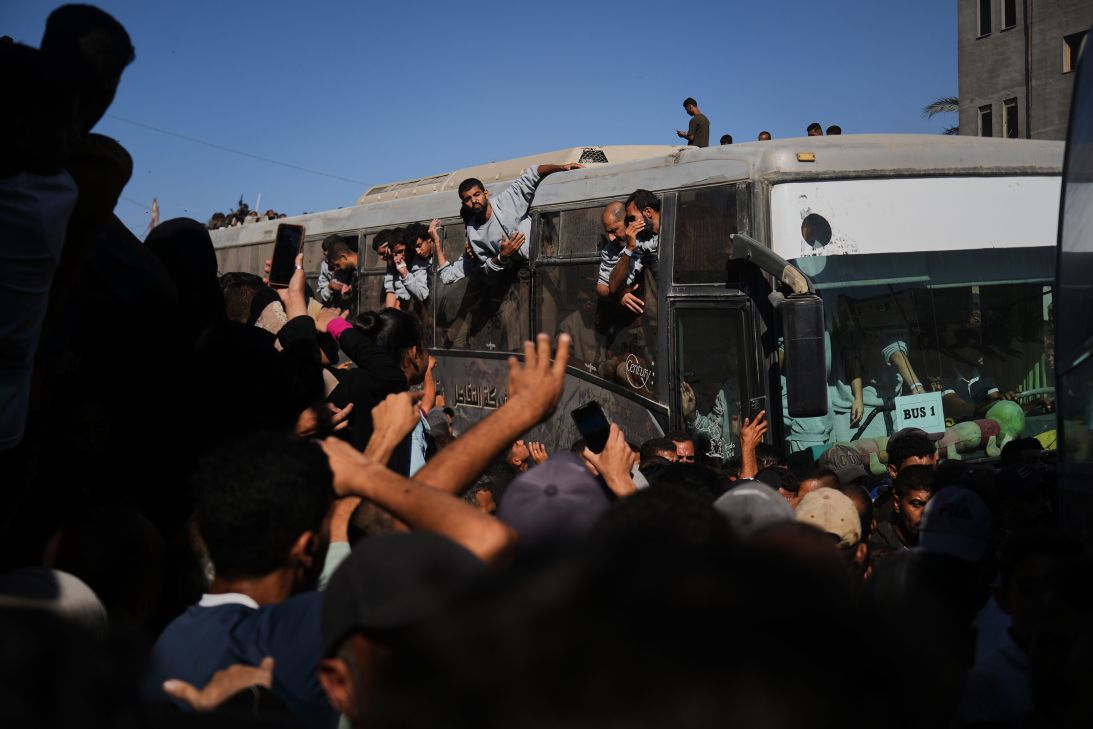
But phase two is far less clear. The 20-point proposal, put forward by Trump and receiving international backing, calls for Hamas to disarm and give up governance of Gaza to a Palestinian committee supervised by an international board. Israel is supposed to withdraw from most of the enclave, but only after an international security force takes over.
So far, that force has yet to take shape. A senior US administration official said this week that the force was “starting to be constructed.” Egypt, Qatar, the United Arab Emirates, Indonesia, and Azerbaijan are among the countries ready to participate, the official said.
Mediators are working on implementing the next steps of the agreement,but the official said it will require weeks of “patience.” Despite a deep mistrust between Israel and Hamas, the official noted “there does not seem to be any intent for the agreement not to be kept.”
As diplomatic delegations continued talks this week in Sharm el-Sheikh – the Egyptian resort town that has hosted historic peace deals – a security vacuum has opened. Taking advantage of that void, Hamas began reasserting itself in force on the streets of Gaza.
In one video widely shared on social media and confirmed by CNN, Hamas gunmen executed eight blindfolded men on the streets of Gaza City.
The so-called Palestinian Resistance Factions, of which Hamas is a part, praised the killings, calling them a “security campaign.”
After two years of war and Israel’s vow to destroy the militant organization that carried out the October 7 terror attack, the message was clear: Hamas is quickly working to take control where Israel has withdrawn.
“As soon as there’s a ceasefire, (Hamas) would emerge out of deep hibernation and they would try to go fast as possible with this quick round of executions, clashes, engaging with what they consider outlaws, with collaborators, with thieves, with murderers,” Muhammad Shehada, a visiting fellow at the European Council on Foreign Relations, told CNN.
Hamas wanted to be seen carrying out executions in order to “create cautionary tales in the ugliest way possible so that other people would be scared into line,” he said.
And Trump appeared to give it a measure of backing.
On Monday, as he was en route to Israel to take his victory lap for brokering the deal, the US president said Hamas wants “to stop the problems” and that he’d given the group “approval for a period of time” to rearm themselves. But the next day he also warned that Hamas must disarm or “we will disarm them.”
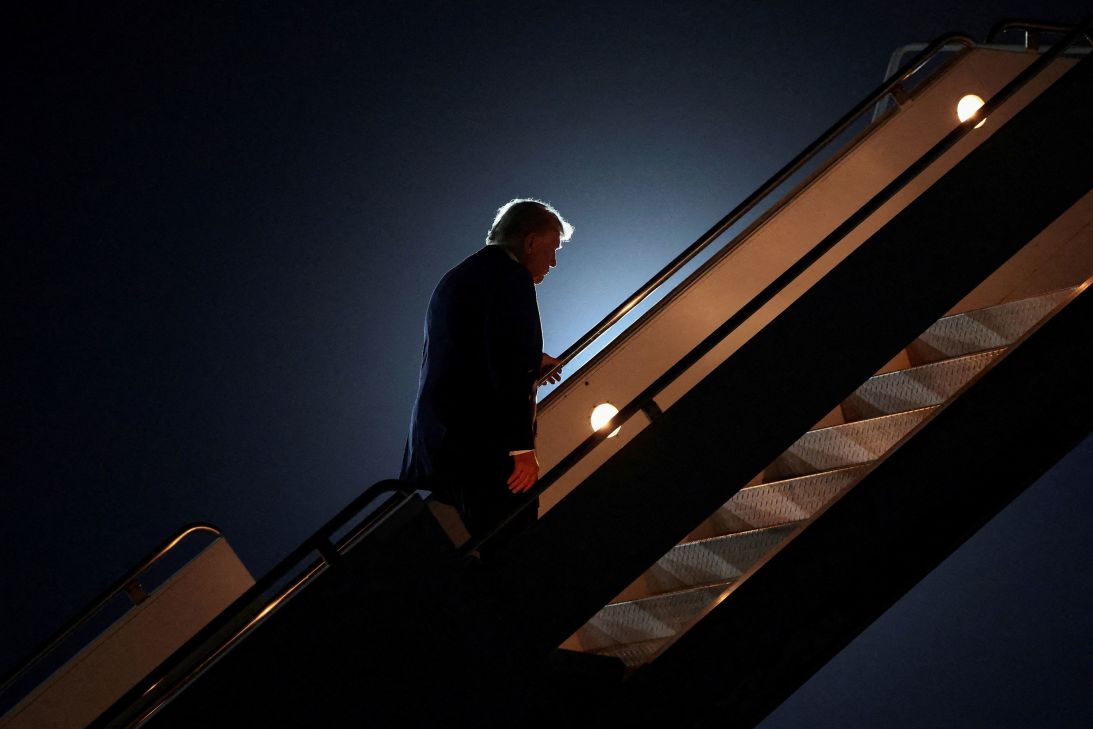
For the last two years, Israel had refused to come up with a plan for post-war governance of Gaza. Former Defense Minister Yoav Gallant presciently warned in May 2024 that without a plan, there were only two options: “Hamas rule in Gaza or Israeli military rule in Gaza.”. Both choices were unacceptable, he said.
And yet without a concrete framework to push forward the next 16 points of Trump’s 20-point plan, both unfolded concurrently, the Israeli military controls just over half of Gaza, and Hamas is quickly consolidating control of swaths of the rest.
“Now that there’s a ceasefire, they (Hamas) feel an urge to do this as fast as possible to try to make it easier for them to do two things: Number one is to disarm large families and try to create the basic state function. The other goal is to pursue wanted individuals – outlaws, collaborators, fugitives, people responsible for looting aid,” Shehada said.
Even so, Shehada said Hamas is still willing to cede governance of Gaza “because Arab countries have made it clear that if Hamas stays in government a single day more, there wouldn’t be any reconstruction or an end to the war.”
The leverage from the Arab states is a crucial element in keeping the deal from coming apart.
During the war, Hamas had faced several unprecedented protests against its rule which grew into armed resistance in parts of the enclave. But with a ceasefire in place, Hamas quickly moved to quash defiance, aiming to cement the authority denied to them in the nascent agreement.
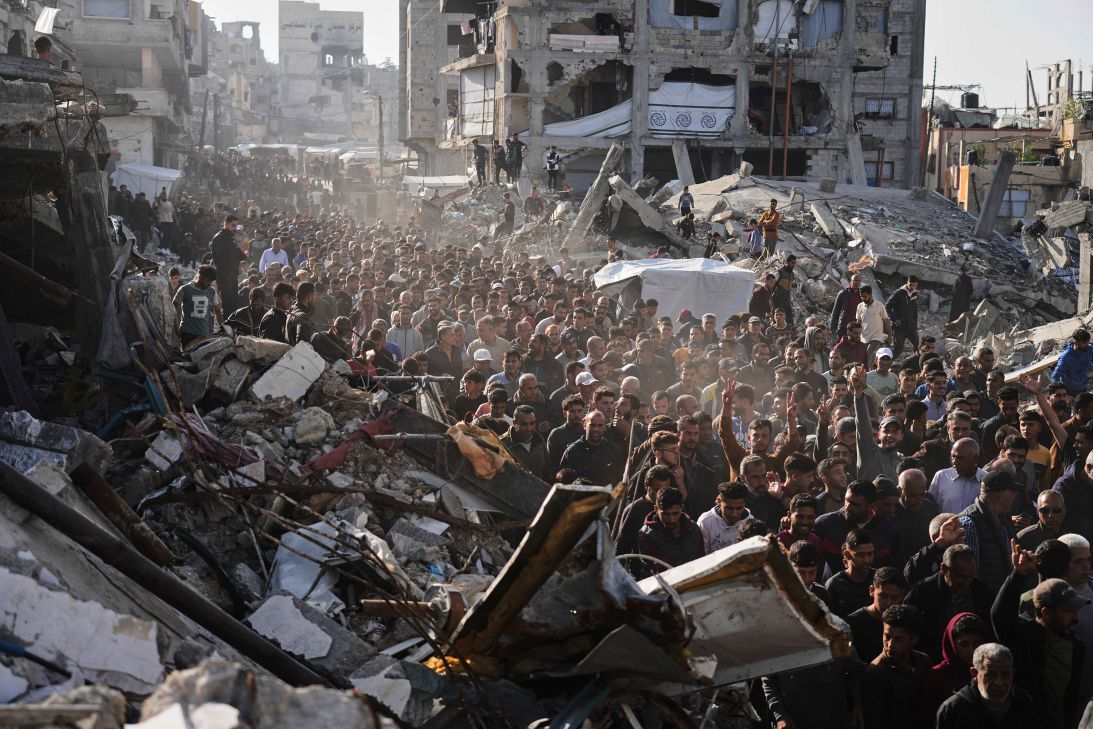
To challenge and weaken Hamas, Israel armed local militias in Gaza, like Yasser Abu Shabab’s in Khan Younis. Based behind Israeli lines, these militias are waging turf wars, Shehada says, where they “descend on the other half of Gaza, carry out attacks, then go and run back to those protected areas.”
Israel collapsed the Hamas government without creating an alternative, which Shehada says created “a huge vacuum that leads to societal collapse – the erosion of law and order, the full collapse of civic order, of any basic societal cohesion.”
According to Trump’s ceasefire plan, a Palestinian technocratic administrative body will run the enclave, supervised by an international body called the “Board of Peace.” Trump will lead the board, along with former British Prime Minister Tony Blair, who played a significant role in supporting the US invasion of Iraq that led to sectarian violence and the rise of ISIS.
A force of 200 US personnel will deploy in support of a temporary international force to stabilize the security situation. . But it’s not clear what countries will contribute to the force or how long it will be deployed. Its exact structure and details remain unclear. The US has said its own troops will not enter Gaza.
At the peace summit in Sharm el-Sheikh, Trump promised there would be “a lot of money coming into Gaza.” He boasted during the trip that the region’s richest nations would pour money into the territory to rebuild. That commitment has yet to materialize, and the entire effort may rely on whether Trump remains engaged and can keep the ceasefire intact.
A joint assessment by the UN, the World Bank and the European Union estimated the recovery would take some $70 billion. Approximately $20 billion would be required in the first three years just to restore basic functions in Gaza, where schools, factories, and hospitals require major work or are beyond repair.
Gaza needs to be rebuilt from the ground up, even as necessities like food remain a critical challenge. Its population is still heavily reliant on aid – and likely will be for the foreseeable future, since Israel has destroyed and occupied much of the territory’s once-rich farmland.
In August, a UN-backed initiative, the Integrated Food Security Phase Classification (IPC), declared famine in parts of Gaza City, a humanitarian catastrophe that cannot be remedied overnight. The IPCs declaration prompted global outrage, and Israel increased the levels of aid it permitted to enter the strip. Since the ceasefire went into effect, the flow of aid has increased substantially. But while the ceasefire agreement calls for Israel to allow in 600 trucks of aid a day, the UN warns it’s a drop in the ocean.
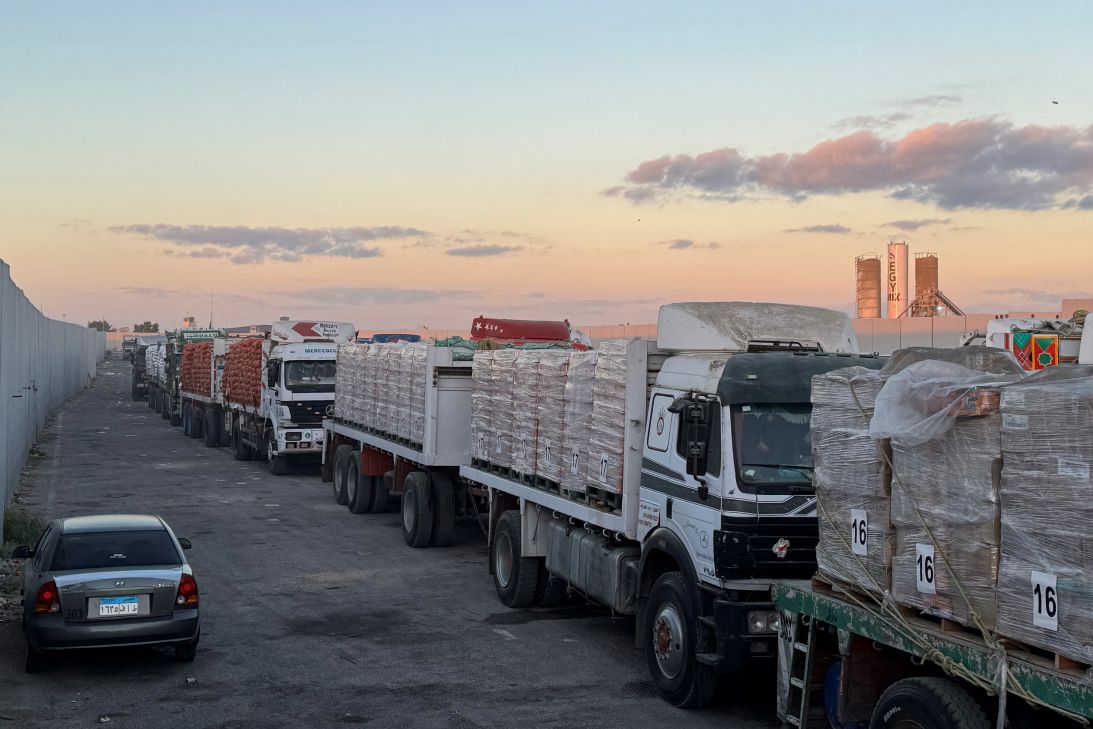
Restrictions on aid should not be a bargaining chip, said the UN Emergency Relief Coordinator Tom Fletcher this week, adding: “We need massive amounts of humanitarian aid flowing into Gaza.”
The prices of vegetables, oil, and flour have soared since the war began. In August, onions cost 400 times more than they did at the outset of the war. While food prices fluctuate across the enclave, overall, they are starting to decline – but affordability remains a serious concern for most. In the absence of cooking gas, nearly two-thirds of households have resorted to burning waste to cook meals, according to the UN. Gaza’s economy has been buried in the ruins.
With few jobs and little access to cash, Gaza’s population has no choice but to rely on aid. For many, the sheer act of obtaining food of the last two years.
Mona Khalil’s son was killed by a drone on his way to a falafel stand.
“I prayed to God for a son, and I did not have him for long before he was gone,” she told CNN. “He went out to buy falafel and never came back.”
“The war stopped, but if it returns, so be it,” she said. “My son is gone. What did I gain?”
CNN’s Tareq Al Hilou, Abeer Salman and Eyad Kourdi contributed reporting.



